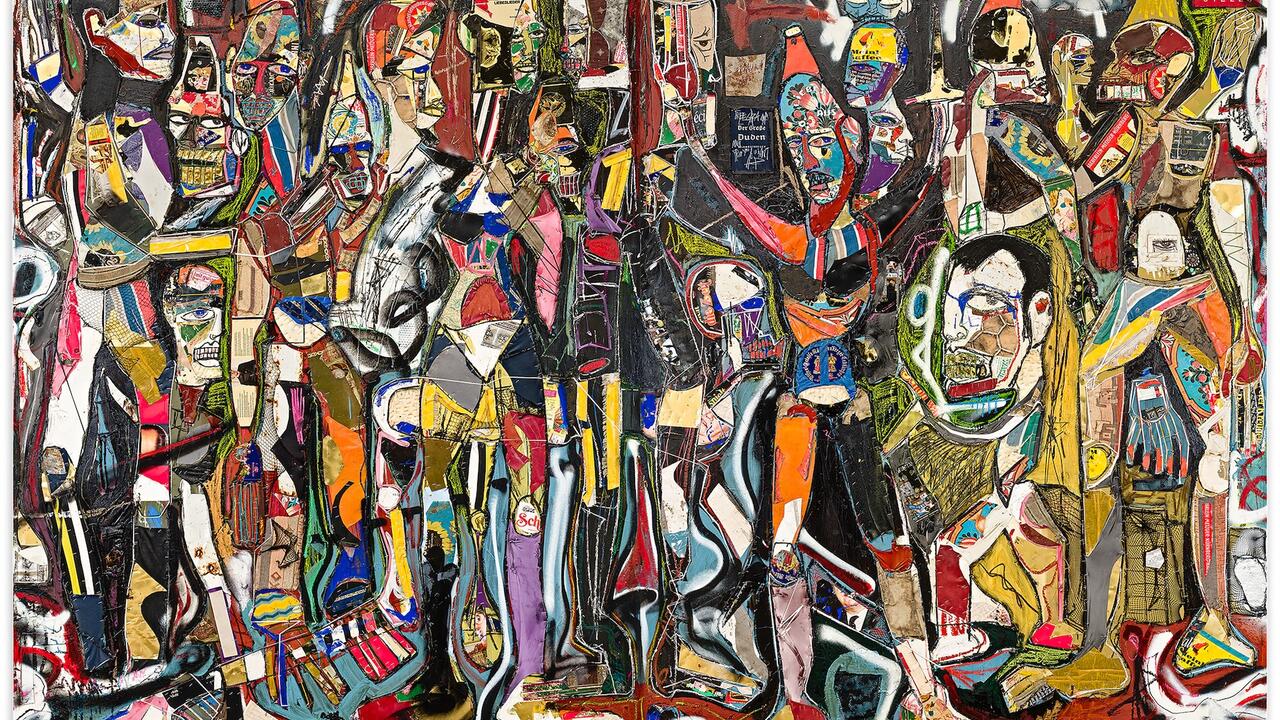7th Shanghai Biennale
Various venues, Shanghai, China
Various venues, Shanghai, China

The conceptual focus of the 7th Shanghai Biennale, 'Translocalmotion', on rapid urban transformation and migration may have scored little in terms of intellectual depth or originality, but it attracted an exceptional number of local visitors. A seemingly endless queue spilled out of the main venue of the Shanghai Art Museum onto the busy Nanjing Xi Road, while the museum itself was hopelessly crowded with both art works and visitors. The experience highlighted how the popularity of an exhibition can actually undermine a viewing experience, and raised the question of how museums can manage their visitors effectively. It was impossible to appreciate the complexities of many of the works on view because there simply wasn’t the space and tranquillity to do so.
Under the direction of chief curator Zhang Qing, and curators Julian Heynen and Henk Slager the Biennale – which included 58 artists, of whom roughly half were from China – presented a considerable amount of research-based work that required a reading of the accompanying texts. Take Ulrike Ottinger’s intriguing film Exile Shanghai (1996), for example, about European-Jewish immigrants living in Shanghai in the 1930s and ’40s. The artist invited six of the surviving immigrants to recount their stories, which she complemented with historical documentation including photomontages and scenes from contemporary city life. Ottinger’s was just one of the many works in the show whose complex narrative was constructed using a wide range of media, from videos and photographs to installations and archive material, and which could not be fully comprehended under the pressure of gathering crowds.
The Biennale adhered to its tradition of establishing a thematic and physical relationship to the city by asking 20 of the participating artists to create works specifically relating to the People’s Square adjacent to the museum. (Until 1949, the museum building housed the Shanghai Horse-Racing Club and the square was part of the racecourse.) Both the historical and contemporary identities of the square and the city were extensively explored in the works on the ground floor of the exhibition. This specific, geographical conceptual parameter gave this part of the show a unique thematic unity, yet risked being artificial and superficial in its manifestation. Thomas Ruff’s contribution, for example, to this section of the show was disappointing – three large-format photographs of well-known landmarks in Shanghai, including the high-rise skyline of the recently developed Pudong area and the former racing track of the People’s Square. As with earlier works in his ongoing ‘jpegs’ series, Ruff processed images sourced from the Internet to create low-resolution, undistinguished and indistinct photographs of the city. Other artists responded to the brief in a more sophisticated way: Rainer Ganahl’s deliciously minimalist conceptual video Crossing the Hangzhou Bay Bridge – Contemplating with Caspar David Friedrich (1774–1840) (2008) recorded a journey in which the artist cycled over the empty Hangzhou Bay Bridge, which was not yet open to public traffic, and then completed the same trip in his car. Both films recorded the artist’s lyrical personal encounters with a highly industrialized and inhuman urban site.
The second floor of the Biennale provided three artists with generous space in which to present extensive compilations of their work. Mike Kelley’s fantastical, multi-part installation Kandor-Con 2000 (2007) imitated the makeup of a convention that comprised of collages, banners, videos and architectural models (made in situ) to form a fantasy about a perfect city. Lonnie van Brummelen & Siebren de Haan’s captivating and thought-provoking installation, Monument of Sugar (2007), about geopolitical theories of mobility and territorial boundaries, presented wall projections of films of European borders, along with an installation made of giant cubes of white sugar. Yue Minjun’s group of stainless steel sculptures, Colourful Running Dinosaurs (2008), presented overblown and tacky versions of Mesozoic beasts, each bearing the artist’s own laughing head – a trademark of his paintings from the 1990s and a former sign of defiance and cynicism, which has turned into an empty signifier today. This new production was an unmistakable sign that Yue’s work is losing its edge.
In fact, the discrepancies between Yue’s work and that of his American and European colleagues on this floor were echoed throughout the rest of the show. Most works by Chinese participants simply stopped at a formal level and were conceptually uninspired and underdeveloped to such an extent that they risked diminishing the intellectual vigour of the entire exhibition. The few outdoor installations in the museum grounds – including 160 ants (Chen Zhiguang, Migration Times: Ant Paradise, 2008), an abandoned train (Jing Shijian’s Express Train, 2008) and Yu Fan’s white horse sculptures (White Horse & Bluejacket, Horse With Silver Mane Nos. 1, 2 & 5, 2008) – were crowd pleasers: the public were fond of posing in front of them for photographs, but the works offered little for further contemplation.
Yet despite the fact that some of the content of many works in the show was lost in the commotion and superficiality of this exhibition, the Biennale will nonetheless be remembered as an exhibition that introduced a lot of important international artists and their research-based, documentary-style works to the local art community and general public.






















